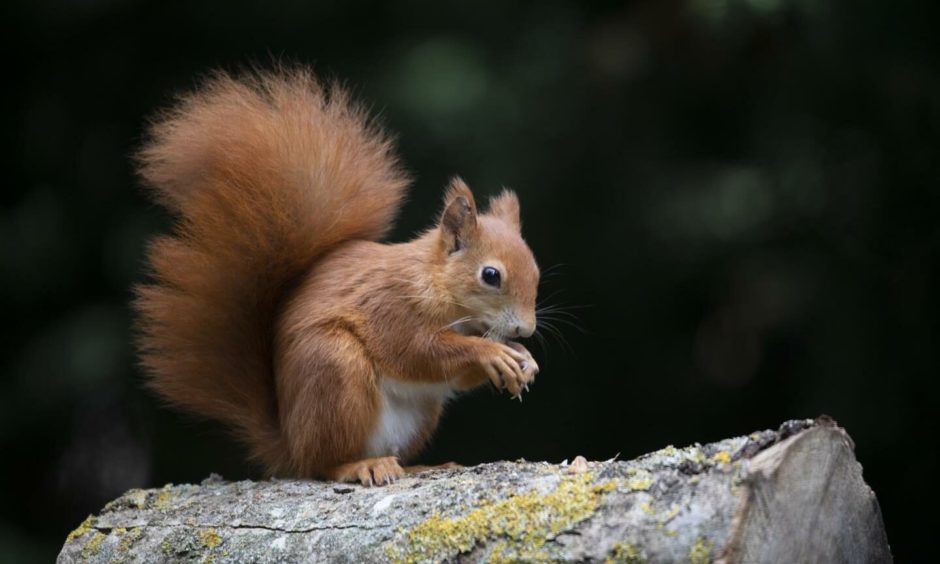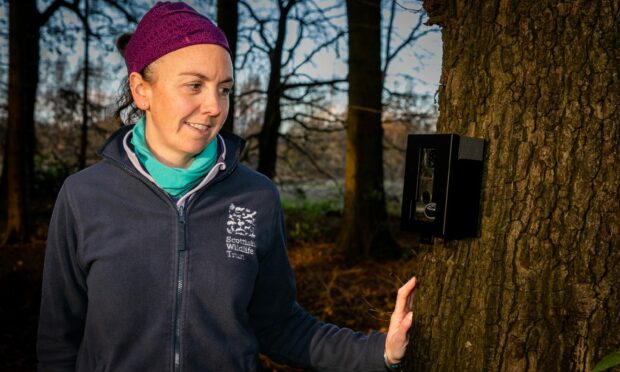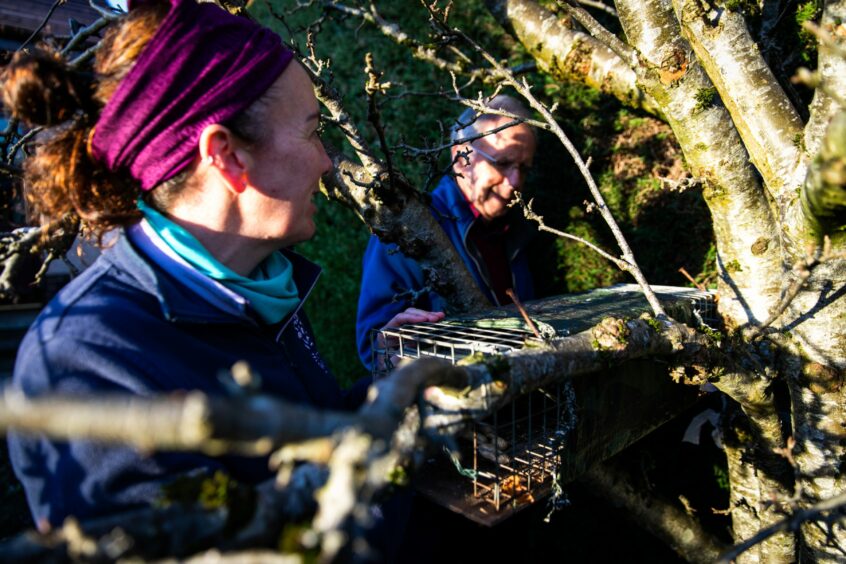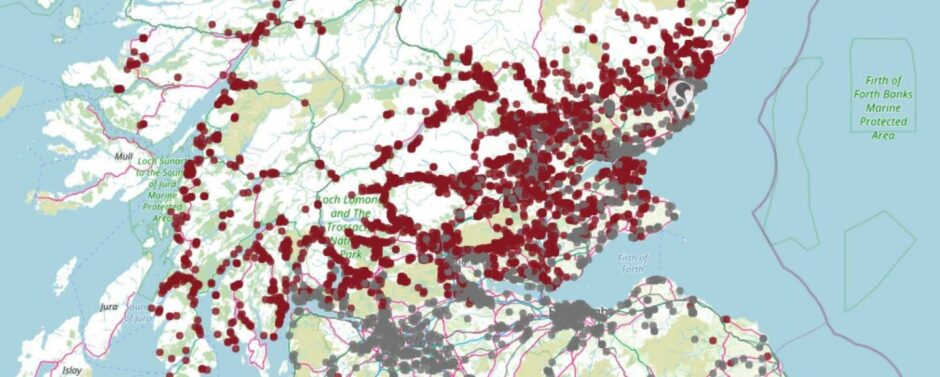Tayside is at the heart of the fight to save red squirrels being wiped out in Scotland.
I spent a day with Ann-Marie MacMaster, who has been the Tayside conservation officer with Saving Scotland’s Red Squirrels (SSSR) for more than four years.
Conservationists are concentrating their efforts along what’s known as the ‘Highland line’ — a 10km wide line that runs from Montrose in the east through Kirriemuir, Crieff and out to the west coast to Helensburgh.
Ann-Marie and colleagues like her are on the frontline of that struggle.
“Living in Perth and Kinross, you see red squirrels quite a lot. Even now, four years in, it makes me smile when I see them.
“They are the reason I do this work,” she says.
 From her Blairgowrie office she oversees the efforts in Tayside to prevent their greys from encroaching further north.
From her Blairgowrie office she oversees the efforts in Tayside to prevent their greys from encroaching further north.
Part of that involves the unpleasant task of killing greys – but Ann-Marie and her colleagues recognise it’s the only way to protect the red squirrel population in Scotland.
“Within the Highland line, the most useful thing anybody can do to help red squirrels is to trap grey squirrels,” she explains.
Why are red squirrels under threat?
Grey squirrels are a threat to their auburn cousin because they outcompete red squirrels for resources such food and shelter.
Greys can also carry squirrelpox virus asymptomatically. If a red squirrel contracts the virus, it is typically fatal.
It is estimated there is just over 160,000 native red squirrels left in the UK, most of which are in Scotland.
Grey squirrels are not native to the UK and were introduced from America in the 19th century. They have since replaced red squirrels in much of England and Wales.
Reds and greys currently co-exist in areas such as Fife and south Perthshire.
But many conservationists expect reds to eventually die out from any area where greys have found a secure footing.
That’s why efforts are focussed within the Highland line – to prevent grey squirrels from further expanding their range, displacing reds in the process.
Volunteers support vital squirrel protection work
Ann-Marie relies on volunteers to help monitor and capture grey squirrels in the area.
Volunteers such as Ian Kellie, who lives in the outskirts of Coupar Angus.
Ian agreed to have a trap set in his garden after some grey sightings.
I joined Ann-Marie as she paid him a visit to see how things have been.
The trap Ann-Marie helped him set up has caught a handful of greys in the past, but there was nothing during our visit.
Ian said: “We need to save red squirrels and I wanted to do my bit for the greater good.”
Ann-Marie has to keep in constant contact with her network of volunteers.
She said: “If someone is away on holiday, it’s important they let us know so we can deactivate the trap.
“We wouldn’t want a grey to get caught in one while no one is around to deal with it. That would just be cruel.”
Where in Tayside and Fife are the key areas for protecting squirrels?
Another part of Ann-Marie’s work involves placing small cameras where greys sightings have been reported through the SSSR website.
A lot of her time is spent verifying these reports.
One of Ann-Marie’s greatest frustrations can be dealing with the fall-out from well-meaning, but ill-informed, members of the public who trap grey squirrels and subsequently release them ‘elsewhere’.
This could be because they either don’t want to dispatch them or didn’t think about what they would do with the grey squirrel once they caught it, she explains.
Under the Wildlife and Countryside Act 1981, it is illegal to release, or allow to escape, a grey squirrel into the wild once captured.
Ann-Marie said: “People not only don’t realise this is illegal, they also fail to consider that they could be introducing grey squirrels into a red squirrel-only area.
“They could also be introducing squirrelpox virus into the local population of squirrels —red or grey!
“Not to mention the stress put on the animal during transportation.”
Then what does ‘removing’ a grey squirrel actually entail?
The reality of “removing” greys is unpleasant.
When officials say they “remove” greys, that means they are killed to ensure they don’t spread to a red territory.
Ann-Marie wants there to be a greater understanding of this so well-intentioned people do not inadvertently make matters worse.
She said: “It’s not pleasant, but it is the reality of what we have to do to protect the reds.”












